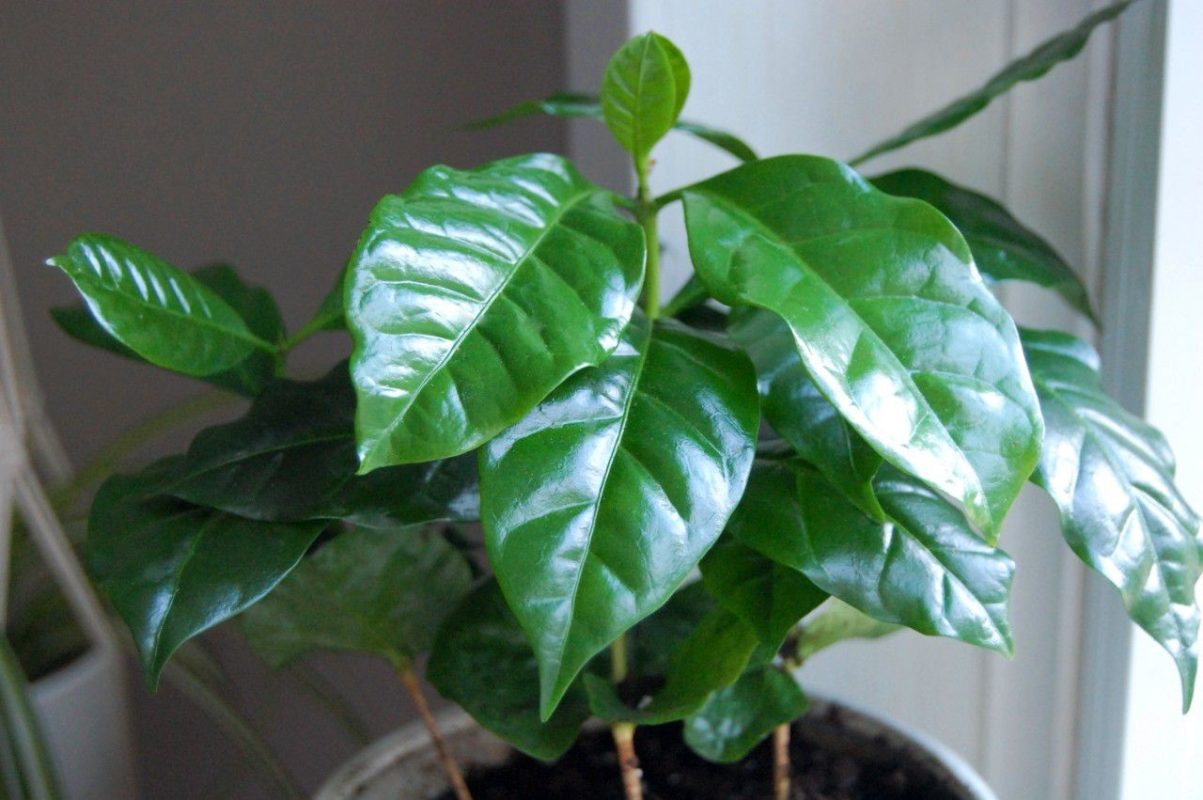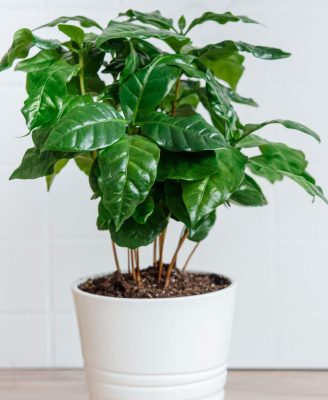Plant Care
Coffee Plant Care
Shiny, green leaves and an attractive shape make this tree an excellent addition to your collection!
Light – Moderate to bright, indirect light. Can tolerate low light, but might become leggy. Avoid direct sunlight.
Water – Water once the top third of the soil is dry. Never allow your Coffee Plant to fully dry out.
Soil – A well-draining potting soil, like Espoma Potting Soil, is perfect
Temperature – A tropical plant by nature, Coffee Plants prefer temperatures between 65° and 80° and should be protected from temperatures below 50°.
Humidity – While average home humidity is fine, Coffee Plants will greatly enjoy higher levels. Frequent misting, a nearby humidifier are or a tray of pebbles and water all great methods to increase humidity. Alternatively, if your bathroom receives enough light, it’s a great location.
Fertilization – Feed during spring, summer and early fall with a balanced fertilizer, like Bonide Liquid Plant Food according to the label’s instructions. There is no need to fertilize during winter.
Size – Averages 5’-6’ tall at maturity, but can be kept smaller with regular pruning.
Repotting – Coffee Plants are fairly quick growers and will need repotting every 1-2 years until they reach their full size. Make sure the container you select is no more than 2 inches larger than the current container and has good drainage.
Propagation – Easily propagated via cuttings.
Toxicity – Considered toxic to people and pets. The cherries and beans produced are safe for human consumption, but not for animals.
Special notes – While Coffee Plants can produce cherries and coffee beans, it is difficult to do when grown indoors.
Once a Coffee Plant is 3 years old, you can begin to encourage it to bloom. Make sure your plant is getting at least 4-5 hours of bright, indirect light and temperatures are 70°-80° during the day and 65°-70° during the night. Once the flowers appear, move the Coffee Plant outside so it can be pollinated or you can pollinate it yourself with a q-tip.



